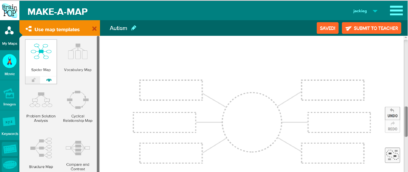Autism Lesson Plan: Create an Autism Awareness Campaign
Grade Levels: 3-5, 6-8, 9-12
In this lesson plan, adaptable for grades 3-12, students explore BrainPOP resources to learn about autism spectrum disorder (ASD), including how it affects people in different ways and behavioral signs. Students will discover how people with autism bring a unique perspective of the world and how their contributions make it a better place to live. Using what they learn about autism, students will work together to create an autism awareness campaign in the classroom.
Students will:
- Complete a KWL chart about autism.
- Watch a BrainPOP movie to learn about autism.
- Use the Make-a-Map tool to identify characteristics of people with autism.
- Research more facts about autism using BrainPOP’s Related Reading feature.
- Create and present an autism awareness campaign.
Materials:
- Internet access for BrainPOP
- Interactive whiteboard
- Class set of the Graphic Organizer (optional)
- Additional books, articles, etc. on the topic of autism (optional)
Preparation:
Lesson Procedure:
- Display the Graphic Organizer on the whiteboard. Ask students to share what they already know about autism. It can be three things as the instructions ask, or more. Write their responses in the first column. Then ask what they want to know about autism and jot their responses in the middle column. Alternatively, you can distribute the table to individual, partners, or small groups for students to do offline.
- Tell students that today they will learn about Autism Spectrum Disorder, or ASD. Explain that ASD affects people in different ways, but that common challenges include the inability to communicate, express emotion, understand figures of speech, and filter sensory input. The movie they will watch explores the sensitivities and needs of people on the autism spectrum. Using what they learn from the movie and further research, they’ll they will create an autism awareness campaign to educate others about ASD.
- Show the movie Autism on the whiteboard to the whole class once through without pausing.
- Next, if you have access to multiple computers, divide the class into pairs or small groups and have them open the Make-a-Map feature from within the Autism movie on their individual computers. As they watch the ASD movie again from within Make-a-Map, instruct them to create a spider map in which they identify characteristics of ASD discussed in the movie, including what it is, its causes, symptoms, behaviors, challenges, effects, ways others can help, etc. To model, you may display a spider map on the whiteboard by selecting the Spider Map from My Maps and choosing Use map templates.
 Encourage students to pause the movie as they fill in their spider maps. Remind them that they can incorporate clips from the movie into their maps and add more nodes as needed.
Encourage students to pause the movie as they fill in their spider maps. Remind them that they can incorporate clips from the movie into their maps and add more nodes as needed.
- After watching the movie, instruct students to keep their maps open and open a second window to access the Related Reading feature for this topic. Have students read each Related Reading, adding more information about ASD to their spider maps. If time is limited, you may ask students to choose just one or two Related Readings, rather than all five. Or, you can divide the Related Readings between the pair or small group.
- Next, have students come together as a class again and display the KWL table from the beginning. Prompt them share what they learned, writing their responses in the third column. You may also return to the first column and revise facts that may be incorrect.
- Announce to the class that now that they know about ASD, they are going to teach others about it by creating an ASD Awareness Campaign. Working with their partner or small group, students are to select an aspect of ASD they want to teach others about, such as what ASD is, challenges of people affected, ways people cope with ASD, how others can help, etc. Suggest that they review their spider maps to identify an aspect of ASD that they want to focus on for the campaign. Make sure that each group or partnership is covering a different aspect.
- Encourage students to be creative in how they choose to present their information. Provide examples such as writing a public service announcement, creating a brochure, designing a collage, putting on a skit, making a video, drawing a cartoon, etc.
Extension Activities:
Invite students to complete the Q & A Worksheet to show what they know about ASD. The may also challenge themselves to the ASD Pop Quiz.
Filed as:
3-5, 6-8, 9-12, Autism, Brain, CCSS.ELA-Literacy.RST.11-12.1, CCSS.ELA-Literacy.RST.11-12.2, CCSS.ELA-Literacy.RST.11-12.4, CCSS.ELA-Literacy.RST.11-12.6, CCSS.ELA-Literacy.RST.11-12.7











